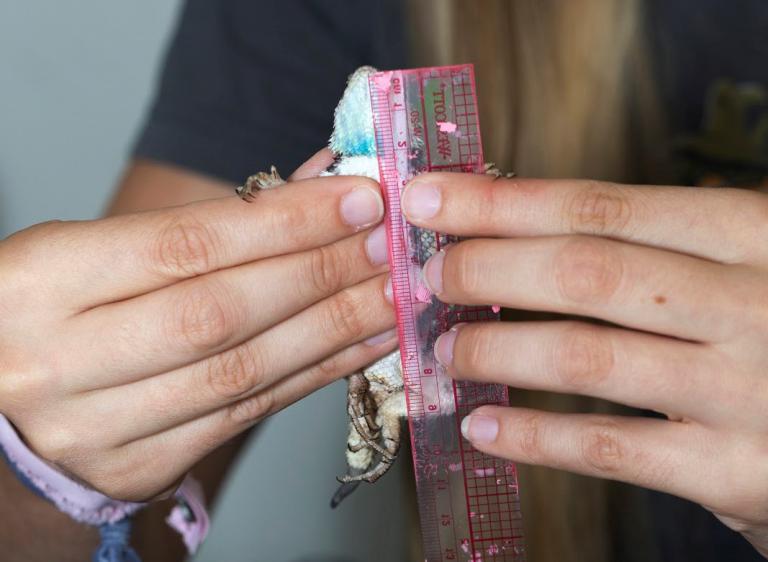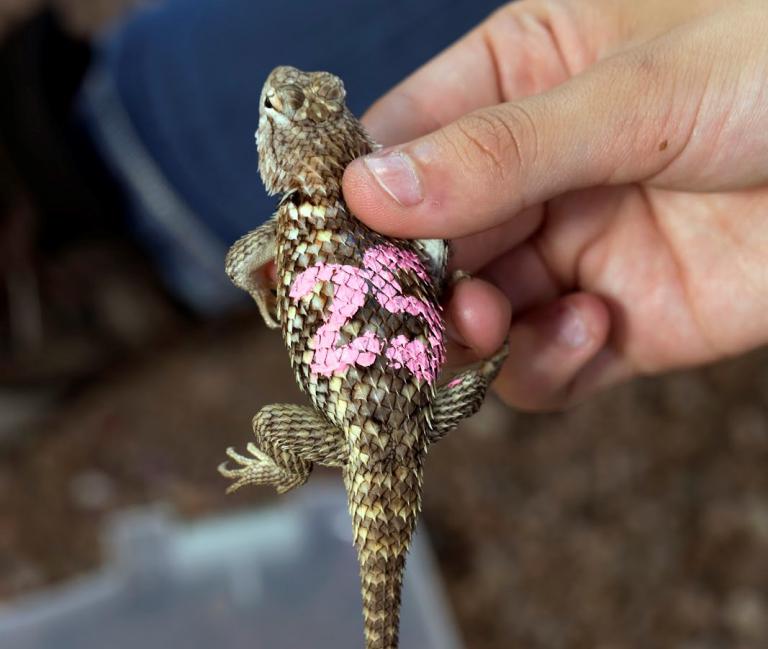In order to estimate the population sizes of the local lizard species present on campus, our crew of undergraduate researchers conducted mark and recapture surveys in the summer of 2017. These surveys aim to estimate population size by capturing every observed lizard, “marking” captured lizards with individual identification, and releasing lizards back to the location at which they were caught. The surveying is then repeated two or more times so that previously marked individuals may be recaptured along with new individuals. After the survey is completed, the date and capture data can be analyzed to determine the number of individuals in the population. This method of population size approximation is appropriate when studying lizards due to their avoidant behavior towards humans, which makes it nearly impossible to locate and identify every individual.
In July of 2017, our research team established discrete plots of land at multiple sites on the University of Arizona campus. These plots were known to contain a relatively large number of lizards, including the Krutch Garden, the turtle pond area, and near the University Medical Center. Each survey had a preset number of days and fixed starting and ending time to improve the consistency of the data, since more lizards are active at different times of day. Lizards were caught using a noose, painted with an identification number, and fitted with a microchip PIT-tag. The microchip PIT-tag supplied an additional way to identify lizards in the event that they shed their scales and the painted number was absent or illegible. Observational and climatic data were also collected for successful captures, such as snout-to-vent length, weight, relative humidity, temperature, etc. Furthermore, the geographic coordinates at which the lizard was caught were also recorded and each lizard was released at this precise location after data collection.

Photo By Rene Clark
Undergraduate researcher measuring the snout-to-vent length of a Desert Spiny Lizard.
The undergraduate research crew plans on conducting further mark-recapture surveys on the U of A campus as temperatures and lizard activity rise. Once adequate data has been collected, we will estimate the population sizes of local lizard species using programs like Program MARK.


